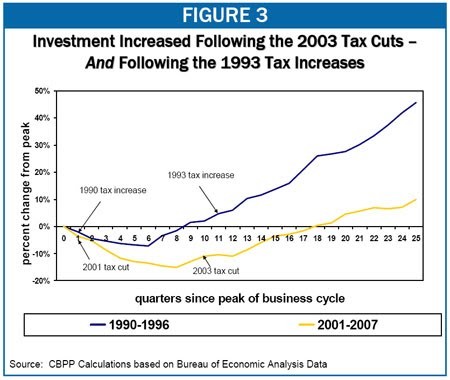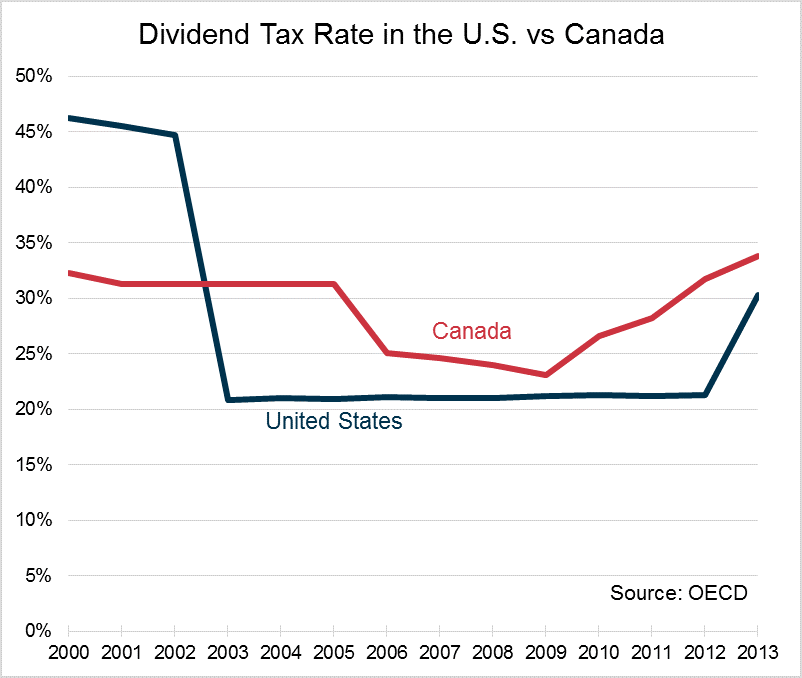Capital Gains Tax Cuts For Middle Income Investors
Post on: 22 Апрель, 2015 No Comment

Imagine selling a $20,000 investment, purchased five years earlier for only $10,000, and paying no capital gains tax at all.
This dream will become reality for middle-income investors beginning in 2008 and will last for three years when a seldom-discussed provision of the recent tax cuts takes effect, providing middle-income investors with a can’t-miss tax-planning opportunity.
Under the Tax Increase Prevention and Reconciliation Act of 2005 (TIPRA) passed by Congress in May 2006, U.S. taxpayers in the two lowest tax brackets will pay no capital gains taxes on long-term investments sold in 2008, 2009 and 2010. This tax-free bonanza applies to investors within the 10% and 15% tax brackets. which account for the vast majority of American taxpayers.
The zero capital gains tax for these taxpayers had already been slated to take effect in 2008, but TIPRA added two more years, significantly expanding the tax-planning opportunity. The years 2008 to 2010 might be the time to sell mutual fund shares in a taxable account if they are worth significantly more than when they were first purchased, but have struggled in recent years. It might also be a time to establish a higher basis in a still-favored investment, or it could be the right time to sell shares in anticipation of a child heading off to college. (To find out more about TIPRA, see TIPRA Helps Convert Your Plans And Save More .)
Capital Gains Tax Basics
Currently, the maximum capital gains tax rate for assets held for more than one year is 15%. Those held for less than one year are subject to the higher tax rates that apply to ordinary income. The 15% capital gains rate applies to taxpayers in the 25%-and-higher income brackets.
In the 10% and 15% brackets, the current tax rate for long-term capital gains is 5%. That is pretty attractive, but it still can’t match the 0% rate that will be in effect from 2008 to 2010. This year, taxable income up to $61,300 qualifies a married couple filing jointly for the 15% bracket.
The rates in place for capital gains also apply to qualifying dividends. This means that an investor in the 15% tax bracket currently pays $5 for every $100 in dividend income. From 2008 to 2010, dividend income to middle income taxpayers (again those in the 10% and 15% brackets) would be tax-free.
The first steps toward a zero capital gains tax for middle-income investors were taken in 2003. That is when Congress lowered the maximum capital gains tax rate from 20% to 15% to give Americans an incentive to save and invest. The legislation was called the Jobs and Growth Tax Relief Reconciliation Act of 2003 (JGTRRA).
For taxpayers in the two lowest tax brackets, under JGTRRA, the capital gains tax rate went from 10% to 5%, and then in 2008 it was scheduled to fall to 0% for just that one year. Then in 2009, the maximum rate was to return to 20%, and the rate for the two lowest tax brackets was to return to 10%. Dividends would be taxed again at ordinary income rates.
The Tax Increase Prevention and Reconciliation Act of 2005
This is where TIPRA took over. It extended the favorable rates on capital gains and dividends by two more years.
The Middle-Income Investor
For middle-income investors, however, the best thing about TIPRA may be the opportunity to sell significantly appreciated investments without paying capital gains taxes over a three-year period.
Make no mistake; the pool of investors who stand to benefit from the zero capital gains rate is quite large. According to the Internal Revenue Service (IRS), taxpayers in the 10% and 15% tax brackets accounted for 63 % of all individual income tax returns filed for 2003. More tax was generated at the 15% rate than at any other rate for that tax year, IRS figures show.
Recent U.S. Census Bureau stats indicate that the median household income in the United States was about $46,000 in 2005, suggesting that the majority of Americans fall within the 10% and 15% tax brackets. Among married couples, the median household income is higher, nearly $66,000 in 2005, according to the Census Bureau.
Again, the top-end limit for a married couple filing jointly is $61,300, but that is taxable income — after deductions and exemptions. That means a married couple with two children taking the standard deduction could earn up to $84,800 in 2006 and still fit within the 15% bracket. ($84,800 minus the standard deduction of $10,300 and minus four exemptions for each family member at $3,300 each comes to $61,300.)
According to the data, therefore, the vast majority of Americans will qualify for the zero capital gains and dividend taxes available from 2008 to 2010.
But do these middle-income Americans invest? Yes. The median income of U.S. households that own mutual funds is $68,700, according to the Investment Company Institute, a trade association for the mutual fund industry. The median mutual fund holding among these households is $48,000, the group says. In 2005, according to ICI, about half of all U.S. households owning mutual funds in 2005 had incomes between $25,000 and $75,000.

Tax-Saving Scenarios
Now let’s consider some scenarios under which a middle-income investor might take advantage of the zero capital gains period.
Let’s return to our first example. Suppose that there is an investor who bought shares of a single stock 10 years ago at an initial price of $10,000. The investor held the stock, reinvested the dividends, and now the holding is worth $20,000. At some point, the investor wanted to sell. Maybe, it was to diversify. Maybe the company’s future prospects weren’t as bright as they once were. Regardless, the investor wanted out of the stock, but had been reluctant to sell because of the capital gains tax.
Currently, the 15% tax bracket investor would pay $500 on that gain, but beginning in 2008 that same investor would pay nothing at all for the same transaction.
A second scenario might involve a recent retiree who owns highly appreciated shares of a growth mutual fund purchased over the course of his working life. Now retired, he wants to reduce his portfolio’s risk, but has been worried about the tax bill. Selling all, or some, of those shares between 2008 and 2010 eliminates the tax worry.
Consider a third scenario. An investor holds a long-term position in a well-managed, low-cost mutual fund that he is happy to stick with. The investor could lower future capital gains taxes on that investment by selling it in the 2008-to-2010 period, pay no capital gains and then repurchase shares of the same fund, establishing a higher basis for future sales and thereby reducing the capital gain that eventually will be taxed.
There’s one key factor to keep in mind: If the capital gain is large enough, it could push taxpayers out of the 15% tax bracket and thereby limit eligibility for the 0% capital gains rate. The savings a taxpayer can realize from this 0% rate is not unlimited.
Waiting to Save
Each scenario above assumes the investments are held in a taxable account as opposed to a tax-favored account like a 401(k) or IRA. Also, given the current capital gains tax for the 10% and 15% brackets is just 5% now, under certain circumstances it may not be worth waiting more than a year for the zero capital gains period to begin. But as 2008 gets closer, middle income investors may want to wait to enjoy the coming tax-free bonanza.
It’s time to start planning for next year now.














